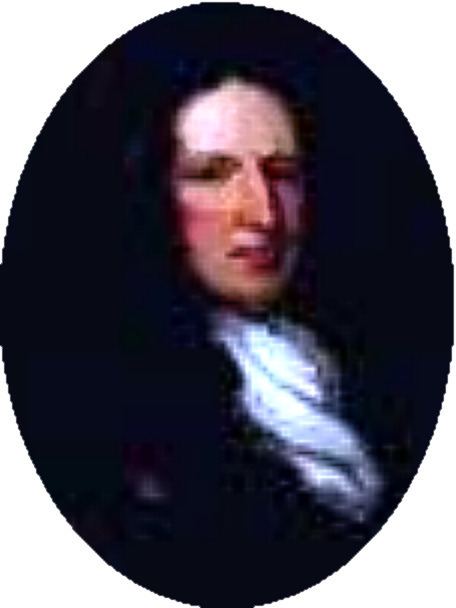Name James Johnston | Role Secretary of State | |
 | ||
Spouse(s) Catharine PoulettLucy Claxton Died May 1737, Bath, United Kingdom People also search for Princess Maria Carolina of Bourbon-Two Sicilies | ||
James Johnston (baptised 9 September 1655 – 3 May 1737 Bath), was envoy extraordinary to Prussia 1690–92, Secretary of State, Scotland, 1692–96 and Lord Clerk Register 1704–05.
Contents
He was the fourth son of Lord Warriston, Archibald Johnston (1610–1663), who was executed by Charles II on 26 July 1663 for having served under Cromwell, and his second wife Helen, daughter of Alexander Hay, Lord Fosterseat.
Secretary of State, Scotland
James, with other members of his family, fled to the Dutch Republic after his father's death. He studied law in Utrecht and according to John Macky (writer and secret agent during the reigns of King William, Queen Anne and King George I), was most proficient.
He returned just before the Glorious Revolution of 1688, bringing William of Orange to England in the same year. After the accession of William, Johnston was sent to the Elector of Brandenburg with a gift of the Order of the Garter. On his return in 1692 he was appointed, with John Dalrymple, as Joint Secretary of State, Scotland.
Johnston was a dedicated Presbyterian and as such agitated for the empowerment of the commoners and their independence from the nobility.
Marriages
In 1696 at Salisbury he married Catharine Poulett, third daughter of John, 2nd Baron Poulett by his first wife, Catharine nee Vere. There were no surviving children.
In 1716 he married Lucy daughter of Thomas Claxton of Dublin, sister of Frances Countess of Rosse and Viscountess Jocelyn, sister of Mary Carter, cousin of Edward Lovett Pearce, cousin of Sir John Vanbrugh and great-granddaughter of Sir Dudley Carleton of Imber Court Surrey, nephew and heir of Viscount Dorchester.
Retirement
Johnston gradually fell from William's favour after demanding guarantees of his tithes and grants in a changing political climate that led to the Act of Resumption in 1711. His dismissal from office soured Johnston against the King, who in turn was vexed by Johnston's "freedom of manners".
Johnston settled at Twickenham at the end of his political career, having returned for a short period to political life under Anne, when he was appointed Lord Clerk Register. He had seen diplomatic service in Germany, first as King's envoy to Berlin, later working to secure the Hanoverian succession, and had frequent journeys to Hanover. It was said George I "often conversed with him very familiarly" and that Johnston was "a great favourite of Queen Caroline, who was much entertained with his humour and pleasantry". It was also said "he keeps out a very great rank, and frequently has Mr. Walpool and the greatest courtiers with him at his country house near London; and the King sometimes does him the honour to dine with him". The King (George I) is also recorded to have been a regular casual visitor to the house.
He was one of the first to construct a home on the Thames in Twickenham during the 18th century. He procured a lease in 1702 and commissioned the architect John James to plan and erect a mansion (known after 1813 as Orleans House) – a project which spanned the following 35 years. The grounds were extensive, including the area now known as the Orleans House woodlands. Johnston created a fine garden which "included canals, an icehouse, a kitchen garden, a pleasure garden, a wilderness, a grotto and a fruit garden." A baroque octagonal room, designed by architect James Gibbs, was added in 1720 for entertaining Caroline who regarded Johnston with great favour.
Johnston sat in the House of Commons of Great Britain for Ilchester from 1708 to 1710 and for Calne from 1710 to 1713.
Posterity
Johnston died at Bath in May 1737 at the age of 83 and was buried at Twickenham on 11 May.
His eldest daughter, Lucy, who was baptised at Twickenham on 7 July 1717, married General George Preston, Colonel of the Scots Greys.
His one surviving son, General James Johnston (21 May 1721 – 26 November 1795), an army officer, was Colonel of the Royal Horse Guards then Colonel of the Scots Greys following the death of his brother-in-law, General Preston in 1785.
James Johnston the younger married Charlotte, daughter of George Montagu, 1st Earl of Halifax. After Charlotte's death he married his own first-cousin, Frances Carter, widow of Philip Twysden and mother of Frances Villiers, Countess of Jersey.
